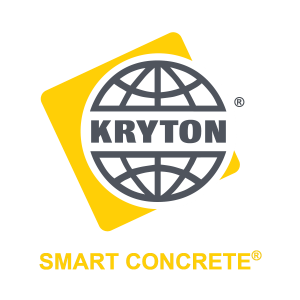U.S. Water Infrastructure Earns Soggy 'D’s,' Underscoring the Imperative for Durable Concrete
Waterproofing admixtures can provide 100-year durability, protect against maintenance shutdowns, concrete failure, and costly repairs in aging facilities
Our admixtures are ideal for water infrastructure projects because they waterproof, self-seal and greatly improve the durability of the concrete ensuring a lifespan of more than 100 years”
VANCOUVER, BRITISH COLUMBIA, CANADA, August 27, 2025 /EINPresswire.com/ -- As the demand for robust water infrastructure intensifies in the U.S., the longevity and reliability of drinking water, storm water and wastewater facilities is paramount. — Kari Yuers
According to a recent report from the Association of State Drinking Water Administrators (ASDWA), the nation’s stormwater infrastructure was rated a D, and its wastewater infrastructure received a D+, largely due to aging concrete and a lack of funding available to repair it from cracking, water ingress, and prolonged exposure to toxic and corrosive chemicals, such as salt, sulfuric acid, chlorine compounds, and alkaline treatments.
Fortunately, a strategic solution lies in employing durable, self-healing concrete technologies like Kryton International’s Krystol Waterproofing Technologies, delivering both performance and long-term cost savings. Krystol technology reacts with moisture to form insoluble needle-shaped crystals that fill capillary pores and micro-cracks in the concrete and block the pathways for water and waterborne contaminants. Unlike other crystalline solutions that react with free lime that eventually depletes over time, Krystol chemically reacts with water and unhydrated cement particles. Any moisture introduced over the lifespan of the concrete will initiate crystallization, ensuring permanent waterproofing and watertightness protection.
“Our admixtures are ideal for water infrastructure projects because they waterproof, self-seal and greatly improve the durability of the concrete, ensuring a lifespan of more than 100 years that not only secures the drinking water or sewerage system of major population centers, but yields significant ROI for taxpayers and utilities who won’t have to keep paying for costly maintenance efforts,” said Kari Yuers, President & CEO of Kryton International.
Additionally, Krystol is compliant with the American Concrete Institute’s requirements for durability, watertightness and environmental exposure – known to specifiers as ACI 350.
The financial impact is extraordinary – especially for wastewater and stormwater systems, which were found to be in the worst shape out of all infrastructure classes by the ASDWA. Additional findings include:
• The American Society of Civil Engineers reports a $3.7 trillion funding gap across all U.S. infrastructure sectors.
• About 30% of the nation's wastewater and stormwater needs are being met — a shortfall of approximately $69 billion per year, projected to balloon to $690 billion by 2044.
• The EPA’s Clean Watersheds Needs Survey estimates a need of $630 billion over the next 20 years for publicly owned wastewater and stormwater systems.
• A Bluefield Research forecast projects $515 billion in U.S. water infrastructure investments from municipalities through 2035, of which $310 billion will go to wastewater.
Together, these figures present a stark reality: U.S. water systems are aging and underfunded, and resilient, long-lasting materials are essential to optimize performance and value.
Cracks and leaks in concrete infrastructure can waste precious drinking water and, in the case of wastewater tanks, can cause contaminants to leak into groundwater, risking both public health and environmental integrity. Preventative strategies that embed waterproofing within the concrete matrix are critical to avoiding expensive, disruptive repairs.
Some notable projects that have been modernized with durable concrete solutions include:
• Northfield Wastewater Tank, Minnesota: Repaired with the Krystol Internal Membrane (KIM) to prevent leaking from new biological aerated filter system, the upgraded facility was recognized with awards from the American Council of Engineering Companies, the City Engineers Association of Minnesota and the Minnesota Society of Professional Engineers.
• Newburyport Wastewater Treatment Facility, Massachusetts: With KIM added to the facility’s concrete mix, after two weeks the plant reported no leaks saving time and the additional expense of costly epoxy injections.
“Not only do these case studies prove that realistic solutions to our aging water infrastructure exist, but – with each project being completed a number of years ago – they also show that the technology works over the long-term,” Yuers said. “Use our innovative Krystol waterproofing technology for new and existing structures or combine with our unique abrasion/erosion resisting admixture for the ultimate in physical durability.”
For more information, visit www.kryton.com or watch its on-demand webinar, Concrete Repair and Waterproofing: Preventing Damage and Reducing Costs.
Andrew King
The Hoyt Organization
+1 914-513-6895
email us here
Visit us on social media:
LinkedIn
Legal Disclaimer:
EIN Presswire provides this news content "as is" without warranty of any kind. We do not accept any responsibility or liability for the accuracy, content, images, videos, licenses, completeness, legality, or reliability of the information contained in this article. If you have any complaints or copyright issues related to this article, kindly contact the author above.

